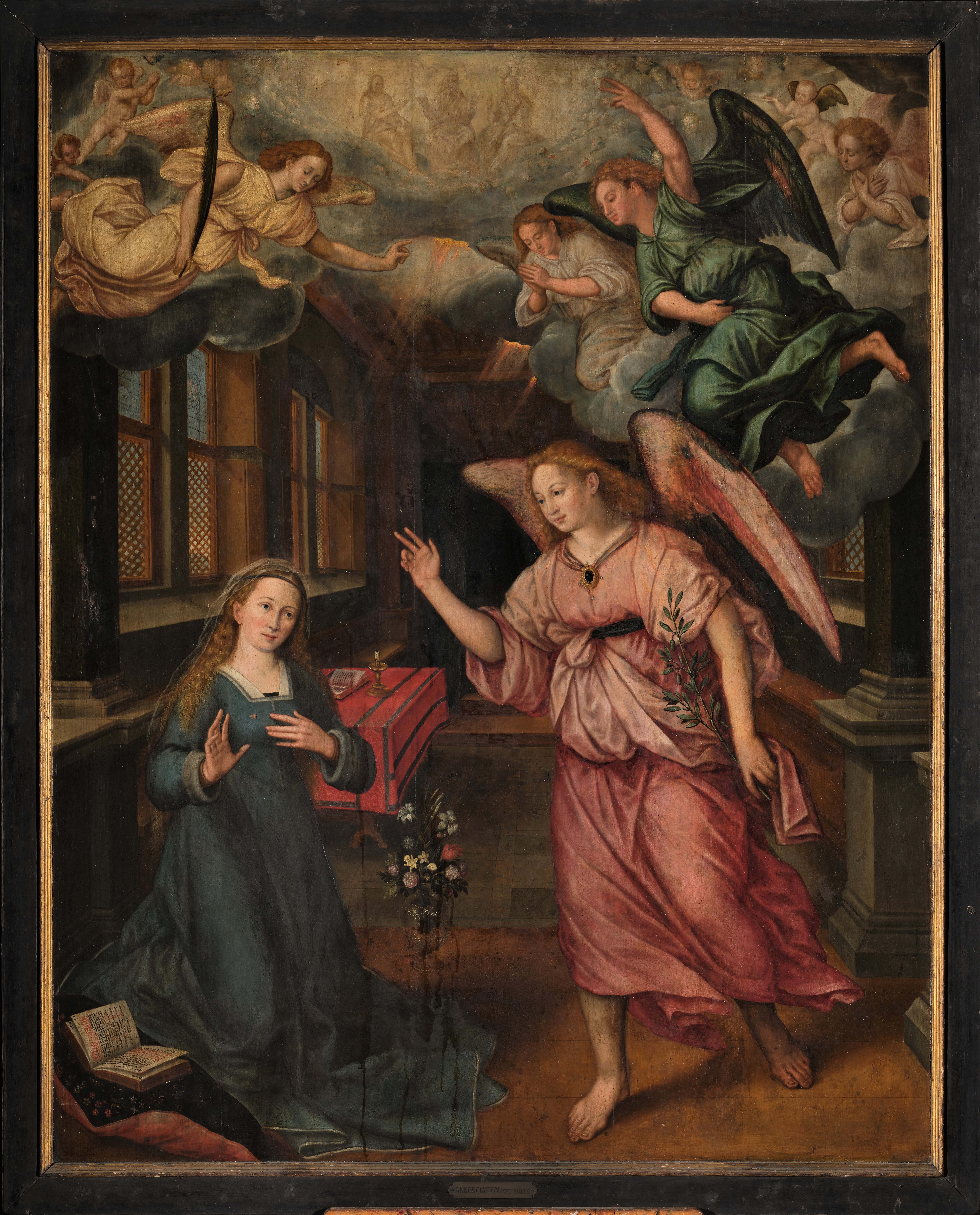South transept
Brabant Gothic style that usually installed glass roofs in the transepts.
Placed on a ledge under the rose window is a 17th century wooden boat, with a
representation of Beatrice Soetkens, the miraculous statue of the Virgin and the boatman. This
gift, confirmed in archives, was long attributed to Michel Angeliwenoni, surgeon to
the Archdukes Albert and Isabella. His epitaph hangs on the first column to the left of
the nave. But further inspection of the cartouche hanging on the boat reveals an obvious resemblance
to the bust of the Chevalier de Bourgeois, which is hanging from the first
column on the right at the top of his funerary monument. Perhaps Angeliwenoni donated another boat,
which disappeared ?
Leaning against the portal are the statues of Saint Hubert and Saint Barbara.
On the right, a large canvas by Erasmus Quellin the Elder, representing ‘The Beheading of
Saint Barbara’. The tower where she was confined during the 3rd century has three windows, symbolising the Trinity, while
the palm symbolises her martyrdom. Refusing to renounce her faith
in Christ, she was condemned to torture and beheaded by her own father. This painting was restored
at the request of King Albert I.
Above the confessional, a 16th century panel representing the Annunciation. It is of
Archangel Gabriel, who announces to the Virgin Mary that she will give birth to the “son of God”.
The work is by an exceptional painter who has not yet been identified.
In front of the door leading to the sacristy, a tombstone of Jean-Baptiste Rousseau
(1670 – 1741). He was first buried in the church of the Discalced Carmelites,
but when it was demolished around 1910, he was transferred to the Sablon church. His tomb
read: “Here lies the Illustrious and Unfortunate Rousseau. Brabant was his grave, Paris
his cradle.”
Above, hanging on the wall on the right, the cenotaph installed by order of H.M. Léopold 1,
King of the Belgians, under the care of the Minister of the Interior J.B. Nothomb. It is decorated with the bust
of Rousseau by Tournai sculptor Jean Félix Dumortier (1801-1868).
Duke Leopold d’Arenberg generously welcomed into his palace at Sablon this
genius of French literature who was known as the Great Rousseau to differentiate him
from the better known Jean-Jacques. He was a famous lyricist but
blamed his enemies, often imaginary, for his failures. He was banned
for life in 1712 for “composing and distributing impure, satirical and
defamatory verses”. Having taken refuge in Brussels, he bickered with Voltaire whom he frequented
at the d’Arenbergs. In a letter included in a collection published in Paris in
1820, he reproached Voltaire for a scandal that he allegedly caused during a mass at
the Notre-Dame au Sablon church.
On the left, beyond the portal of the Saint Marcou chapel, the statue of the Virgin and Child of
Notre-Dame des Victoires au Sablon. Unfortunately, it is not the original,
which was burned by the Calvinists during religious unrest in the 16th century. The current
statue was offered by Archduchess Isabella, governess of the Netherlands and daughter of the King of
Spain Philip II. The Virgin is in rudimentary form, as was sometimes the tradition in
Mediterranean countries: only the head and hands are carved.
The statue has to be dressed to have a place in this religious space
The cloak of the Virgin of the Sablon is richly embroidered and was a gift from the van der
Vaeren and Waucquez families.
